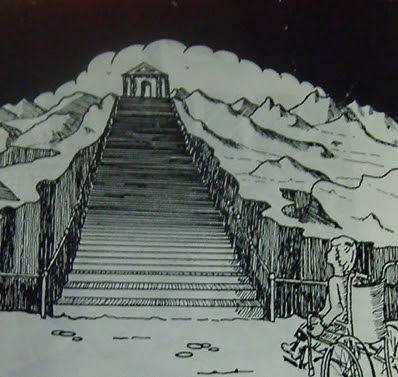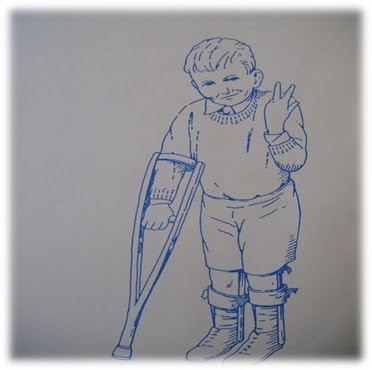Guest Post: Polio in Ireland: rehabilitation in the mid-twentieth century
Polio became a significant public health threat in the Republic of Ireland in the middle decades of the twentieth century. The largest epidemic year was 1956, when there was an incidence rate of 17.2 per 100,000.[1] As part of my research into the social and cultural implications of the prevalence of polio in Ireland, an oral history project was undertaken with a selection of polio survivors to gain insight into the lived experience of the disease. An intriguing theme to emerge from these interviews was the fact that often, polio survivor’s physical rehabilitation regimes were improvisatory, and took place in domestic spaces. As Roberta Bivins, Hilary Marland and Nancy Tomes have argued, examining these domestic medical practices and thinking about households allows for an exploration of ‘vital aspects of preventive and therapeutic activities that are often overlooked in grand narratives of scientific, market and professional change’.[2]
A number of facilities to rehabilitate polio cases existed in Ireland from the early 1950s onwards, including the Central Remedial Clinic in Dublin and the Cork Polio and Aftercare Association in Cork. However, these services were concentrated in urban areas and for many rural polio survivors, gaining access was unfeasible. As a result, numerous individuals placed themselves in the instigating role in relation to their own rehabilitation, using ad hoc methods to rediscover and re-define their physical capabilities following the conclusion of the acute stage of illness. Sean Mulligan, who fell ill in rural Co. Roscommon in 1950 aged eleven, remembered that ‘I was let home without being given any directions about what I should do or could do, I just lay there’.[3]
Sean recalled that:
I was not able to walk or get out of bed. I was lifted in and out of the bed and with no guidance from anybody. I lay there; my mother said to me you’ll have to get out of there Sean. I started walking around the kitchen with the aid of a chair.[4]
After six months of self-directed rehabilitation, Sean remembered:
It started to recede then ... some muscles started to get stronger. I could walk around, I started to use the chair ... and I remember my younger brother and myself used to knock around and do things together on the farm and that helped me to ... develop the muscles again, to be able to walk.
 |
Ref: 'Tantalus and the Wheelchair', Polio Journal vol.13, no.3, front cover
|
Often, survivor’s family members were central to the creation of domestic rehabilitative strategies. Frances Graham, who contracted polio aged ten while living in the village of Ramelton in Co. Donegal in the summer of 1953, recalled:
We didn’t get any [treatment] here. I even remember my mother ... buying one of those long tin baths ... bathing in hot water was supposed to be good for it. So she got this and I had to bathe in this hot water.[5]
Similarly, when Helena Chapman contracted polio as a school girl in the summer of 1956, her father contributed to her regime of physical rehabilitation:
They were focusing on my legs and my face; I had to do exercises for that side of my face. My dad came up with a good solution although it wasn’t good for my teeth! He used to send me up Cleaves toffee to chew with that side of my face and it did actually help.[6]
 |
| Ref: Polio Journal 10, no.2, front cover |
Bivins, et al have argued that there is considerable ‘scope and worth’ to conceptualising the home as a place where health can be improved.[7] The oral history project carried out with Irish polio survivors highlighted the importance of investigations into the home as a location for healthcare delivery. For Irish polio survivors, rehabilitative spaces were often fluid, extending beyond traditional sites to include non-medical, domestic environments.
Stephen Bance
Centre for the History of Medicine, UCD
Footnotes:
[1] Registrar General Report, 1956 (National Library of Ireland (NLI), T.3/36); W.E. Vaughan and A.J. Fitzpatrick, Irish Historical Statistics: Population 1821-1971 (Dublin, 1978), p. 4.
[2] Roberta Bivins, Hilary Marland and Nancy Tomes, ‘Histories of Medicine in the Household: Recovering Practice and “Reception”’, Social History of Medicine Advance Access 0, No. 0 (6 Oct.2016), pp 1-2.
[3] Interview with Sean Mulligan of Ballykeeran, Co. Westmeath (22 Dec. 2015).
[4] Ibid.
[5] Interview with Frances Graham of Ramelton, Co. Donegal (6 May 2015).
[6] Interview with Helena Chapman of South Parade, Belfast City (15 Jan. 2015).
[7] Bivins, et al, ‘Histories of Medicine in the Household’, pp 1-4.